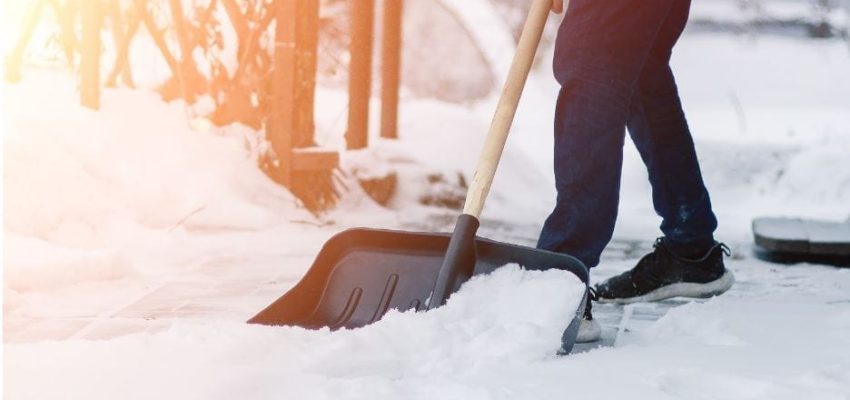10 Tips to Help You Shovel Safer This Winter

Like it or not, shoveling snow is a part of life for New Englanders in the winter. While it may seem like an inconvenience, keeping walkways clear of snow and ice is imperative to minimizing the risk of a slip and fall or other injury. It’s important, however, to remember that shoveling can put quite a strain on your body — especially if you’re not following appropriate safety procedures. Here are some insights to help make the shoveling process easier and safer this winter.
Before You Start:
Plan Ahead — Consider salting your driveway and any walkways before the snow starts in order to minimize the chance of ice forming. This can also make the shoveling process easier once you do begin.
Choose The Right Shovel — Today, it’s easier to find ergonomic shovels that reduce the amount of bending required when shoveling. Find a shovel that is comfortable and lightweight to make this process easier. You should also consider different sized shovels. For instance, a smaller shovel can come in handy when digging out your car or a narrow set of steps while a bigger shovel can be better for wider areas, like your driveway or sidewalk.
Wear Layers — Dress in layers to stay warm. Doing this also makes it easy to remove layers as you shovel to avoid overheating.
Warm Up — Take a few minutes to stretch and warm up your muscles before you start shoveling to avoid a muscle strain.
Stay Hydrated — Don’t forget to drink water before, during, and after you shovel. Staying hydrated is key during periods of exertion.
As You Shovel:
Shovel In Bursts — While it may seem like more work, shoveling periodically as it snows will be easier than doing it all at once when the snow stops.
Keep Up With The Snow — If you do choose to wait, try to shovel soon after the snow falls, when it’s lighter and fluffier. The longer snow stays on the ground, the heavier and harder to shovel it can become.
Shovel Smarter, Not Harder — Push snow instead of lifting it whenever possible to reduce the strain on your body.
When Lifting Snow — Keep your feet hip-width apart and bend from your knees, not from your back. Avoid twisting your torso when lifting snow and try to lift small amounts of snow at a time instead of overfilling your shovel.
Take Breaks — Consider taking a break after 20 to 30 minutes of shoveling, especially when the snow is wet.
The most common shoveling related injuries are to the lower back. If you are not regularly active or consider yourself at a higher risk for injury, be sure to consult your doctor before you head out to shovel. Should you have any concerns regarding your ability to safely shovel snow, consider some alternatives, such as hiring a reliable snow removal service.
Have more questions about protecting your home this winter? A local Bearingstar Insurance agent would be happy to assist. Visit our website to connect with one today: http://bit.ly/2C85CPP
Back to Blog